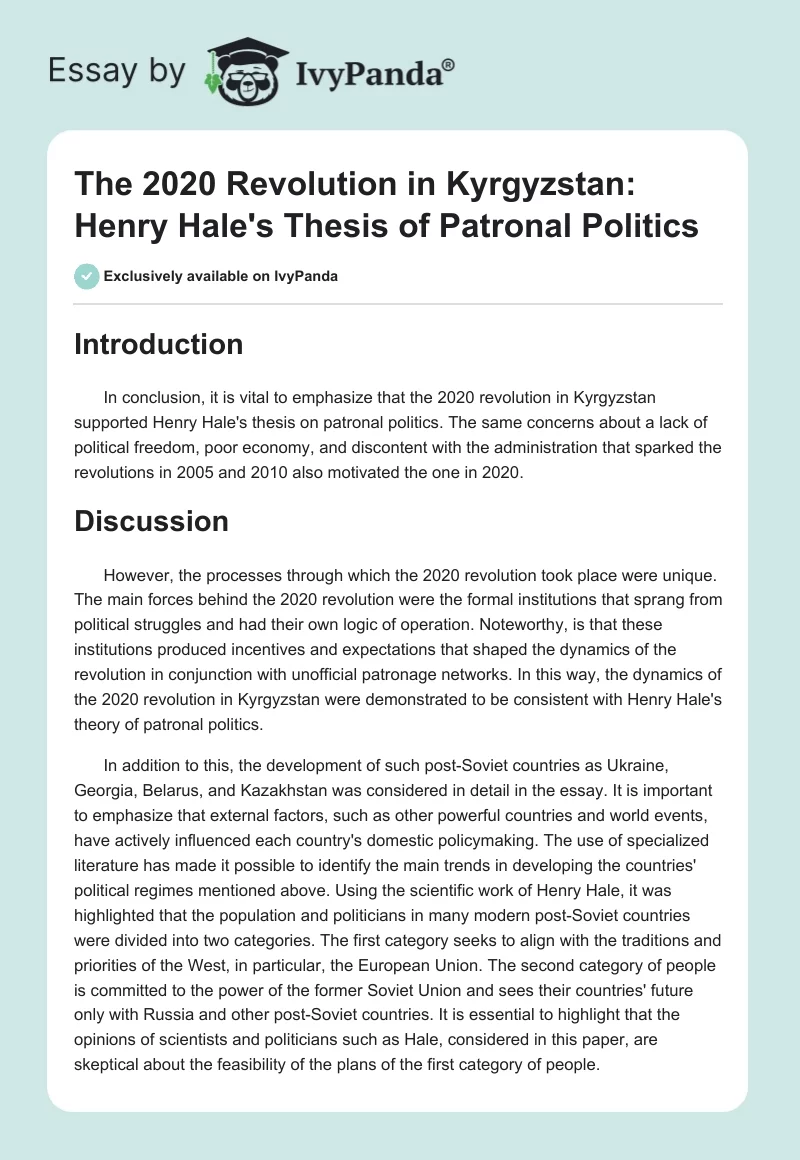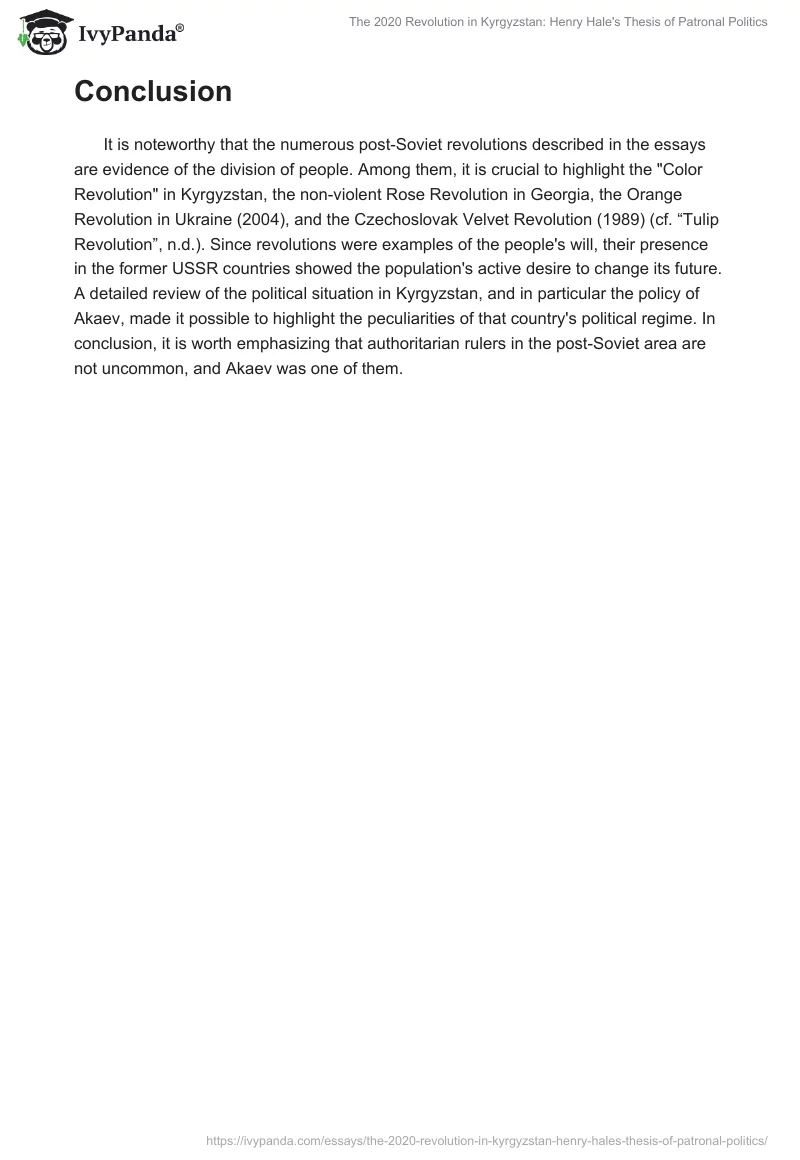Introduction
In conclusion, it is vital to emphasize that the 2020 revolution in Kyrgyzstan supported Henry Hale’s thesis on patronal politics. The same concerns about a lack of political freedom, poor economy, and discontent with the administration that sparked the revolutions in 2005 and 2010 also motivated the one in 2020.
Discussion
However, the processes through which the 2020 revolution took place were unique. The main forces behind the 2020 revolution were the formal institutions that sprang from political struggles and had their own logic of operation. Noteworthy, is that these institutions produced incentives and expectations that shaped the dynamics of the revolution in conjunction with unofficial patronage networks. In this way, the dynamics of the 2020 revolution in Kyrgyzstan were demonstrated to be consistent with Henry Hale’s theory of patronal politics.
In addition to this, the development of such post-Soviet countries as Ukraine, Georgia, Belarus, and Kazakhstan was considered in detail in the essay. It is important to emphasize that external factors, such as other powerful countries and world events, have actively influenced each country’s domestic policymaking. The use of specialized literature has made it possible to identify the main trends in developing the countries’ political regimes mentioned above. Using the scientific work of Henry Hale, it was highlighted that the population and politicians in many modern post-Soviet countries were divided into two categories. The first category seeks to align with the traditions and priorities of the West, in particular, the European Union. The second category of people is committed to the power of the former Soviet Union and sees their countries’ future only with Russia and other post-Soviet countries. It is essential to highlight that the opinions of scientists and politicians such as Hale, considered in this paper, are skeptical about the feasibility of the plans of the first category of people.
Conclusion
It is noteworthy that the numerous post-Soviet revolutions described in the essays are evidence of the division of people. Among them, it is crucial to highlight the “Color Revolution” in Kyrgyzstan, the non-violent Rose Revolution in Georgia, the Orange Revolution in Ukraine (2004), and the Czechoslovak Velvet Revolution (1989) (cf. “Tulip Revolution”, n.d.). Since revolutions were examples of the people’s will, their presence in the former USSR countries showed the population’s active desire to change its future. A detailed review of the political situation in Kyrgyzstan, and in particular the policy of Akaev, made it possible to highlight the peculiarities of that country’s political regime. In conclusion, it is worth emphasizing that authoritarian rulers in the post-Soviet area are not uncommon, and Akaev was one of them.


